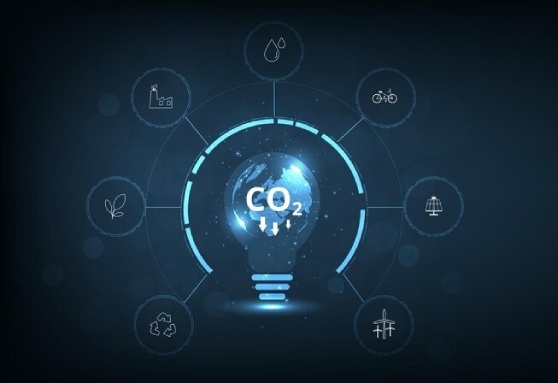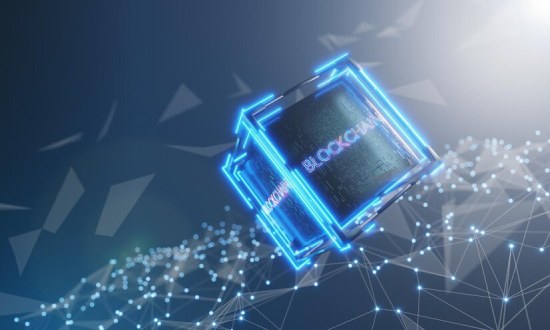-
This article entails carbon credits and analyzes how blockchain application development can overcome the limitations of carbon credits. It emphasizes blockchain's potential uses in the carbon credit supply and use chains.
What are Carbon Credits
Carbon credits are authorizations that grant the owner the right to emit a specific quantity of greenhouse gasses (GHG), such as carbon dioxide. One credit allows for the release of one tonne of carbon dioxide or another greenhouse gas equivalent.
Kyoto Protocol gives credit to the entities that pollute. Those credits permit them to emit GHGs to a certain level, which is routinely decreased. Meanwhile, the firm can trade any credits it doesn't require to another company that does.
Private businesses are, therefore, doubly motivated to decrease greenhouse emissions. If their emissions surpass the cap, they must pay extra for credits. Additionally, they can generate income by cutting their emissions and reselling their extra permits.
Carbon emitters can purchase carbon credits generated by initiatives that remove or decrease GHGs from the atmosphere. It enables them to compensate for their inevitable emissions.
Also, Visit | An Explainer on Regenerative Finance (ReFi)
Carbon Credit Limitations
Big firms use carbon credits for their net-zero strategies. However, its market, Voluntary Carbon Market (VCM), is not regulated. There is a lot of skepticism about the effectiveness and quality of the current stock of carbon credits.
The VCM is an open market in which private actors trade carbon credits. It has operated without a common standard for quality or accounting standards since its inception.
Without these regulations the market has become oversaturated with certifying choices, making it difficult for buyers of carbon credits to distinguish between signal and noise. A similar absence of transparency affects the accuracy of claims about environmental benefits.
Subsequently, many environmentalists doubt carbon credits' ability to mitigate climate change, promote sustainable development, and stop biodiversity loss.
Many institutions and countries are adapting themselves to the carbon credit exchange market. They continue emitting greenhouse gases and do not invest in steps to prevent emissions as they buy unlimited credits.
For instance, a firm reduced one ton of carbon (1 carbon credit), and another company bought this credit. So, overall the net emission reduction is zero.
Explore |A Guide to Understanding Eco-Friendly Crypto Development
Carbon Credits on Blockchain
Blockchain provides a distributed ledger that records each transaction with timestamps and unique cryptographic signatures. It enables people to trace the history of any transaction.
Moreover, this technology can reliably record and transfer data flow in carbon credit trading.
Carbon Credits Tokenization on Blockchain
Blockchain applications have seen an increase in use cases in the carbon market. Asset tokenization is one of the most common concepts, with several trade-finance, blockchain-backed initiatives addressing the carbon credit market's poor liquidity, slow speed-to-market, and transactional friction.
Tokenization is a process of turning physical "paper" certificates into entries on a public and digital ledger. It enables the making of a virtual copy of assets on the blockchain.
Tokenization of carbon credits refers to the transfer of the data and features of the carbon credits to a blockchain, which represents them as tokens.
One can produce carbon credits directly on a blockchain with all associated attributes available to the public. A carbon token is equivalent to one carbon credit.
A token typically denotes a claim on a carbon credit. On the blockchain, accessing and trading digital tokens—whether fungible, semi-fungible, or non-fungible—makes it simple to access and trade carbon allowances.
Investors searching for financial technology solutions to issues with the carbon market have been drawn to this trend.
In the realm of offsets, blockchain-powered NFTs, in particular, are creating waves.
Although NFTs are blockchain-enabled receipts, they are not just for proving ownership. For selling, an NFT owner can split them into smaller fractions or units.
A buyer cannot purchase credits in quantities below one metric tonne of carbon or around the weight of a great white shark. It works well for businesses that buy in large quantities but makes offsets for regular transactions impossible. Fractionalized carbon credits increase market involvement and democracy by allowing regular consumers to claim ownership of the same carbon credit.
Read More about Blockchain Based-Tokenization | A Guide to Essentials
The Impact of Carbon Credit Tokenization on the Voluntary Carbon Market (VCM)
Anybody with a crypto wallet can list credits for sale and purchase them after their tokenization. It has striking differences with the existing VCM system, where companies buy carbon credits and ordinary people only have access to them through brokers or traders. Moreover, tokenization adds efficiency and transparency to the VCM that weren't previously there.
Below is a list of benefits of tokenization:
- Healthier and more open markets: Markets will be more effective thanks to tokenized carbon and low counterparty risk. Everyone can buy or sell carbon credits without creating an account, registering, or getting approved, and trades are promptly finalized.
- Efficiency and disintermediation: With blockchain technology, intermediaries can now provide more specialized, value-adding services. Direct communication between buyers and sellers allows for quicker and less expensive transactions. When there is no requirement to trust a third party, there is less risk of fraud.
- Liquid marketplaces: With the help of blockchain technology, it is possible to pool or aggregate carbon credits with comparable characteristics, increasing liquidity and letting the market determine the asset's fair market value.
- Fractionalization: Similar to a currency, tokenized carbon credits can be "fractionalized" into quantities smaller than one metric tonne. Small-scale carbon initiatives stand to gain from this because they can now issue credits on less land for a lot less money. On the other side, it gets easier to buy, sell, and retire carbon credits. Sub-tonne carbon credits are also becoming necessary for the retail and transportation sectors, for example, to offset precisely the correct quantity of carbon for the production of a single t-shirt or flight.
Also, Read | A Quick Guide to NFT (Non-Fungible Token) Development
Conclusion
Tokenized carbon allowances have the potential to significantly improve the efficiency, openness, and transparency of the carbon market. They open up a plethora of new use cases, and because of the unrestrained innovation taking place in the Web3 space, anyone from anywhere in the world can add new usefulness.
Carbon registries built on blockchain technology offer a level of transparency that is desperately required. Additionally, a new source of funding is diverted to on-the-ground initiatives by making carbon markets accessible to anyone with an internet connection and a cryptocurrency account.
If you wish to create a blockchain-based carbon credit platform, then contact our technical experts.

Our Offices
INDIA
Emaar Digital Greens, Sector 61,
Gurugram, Haryana
122011.
Welldone Tech Park,
Sector 48, Sohna road,
Gurugram, Haryana
122018.















